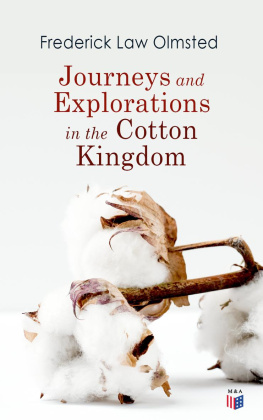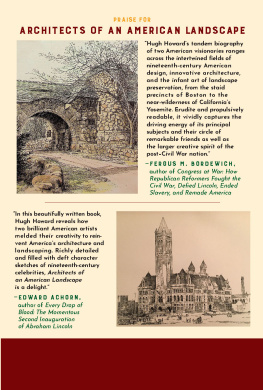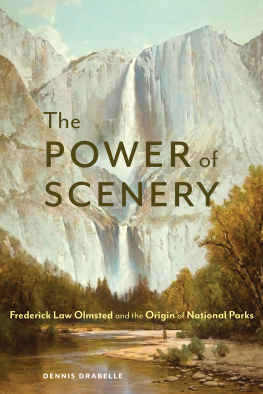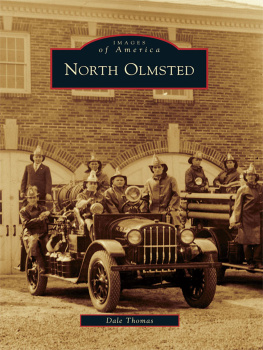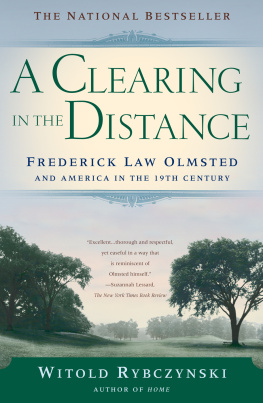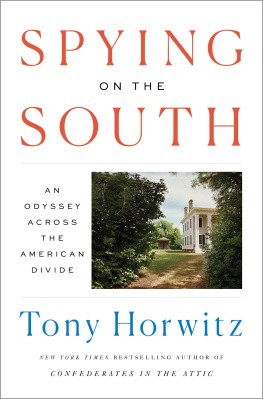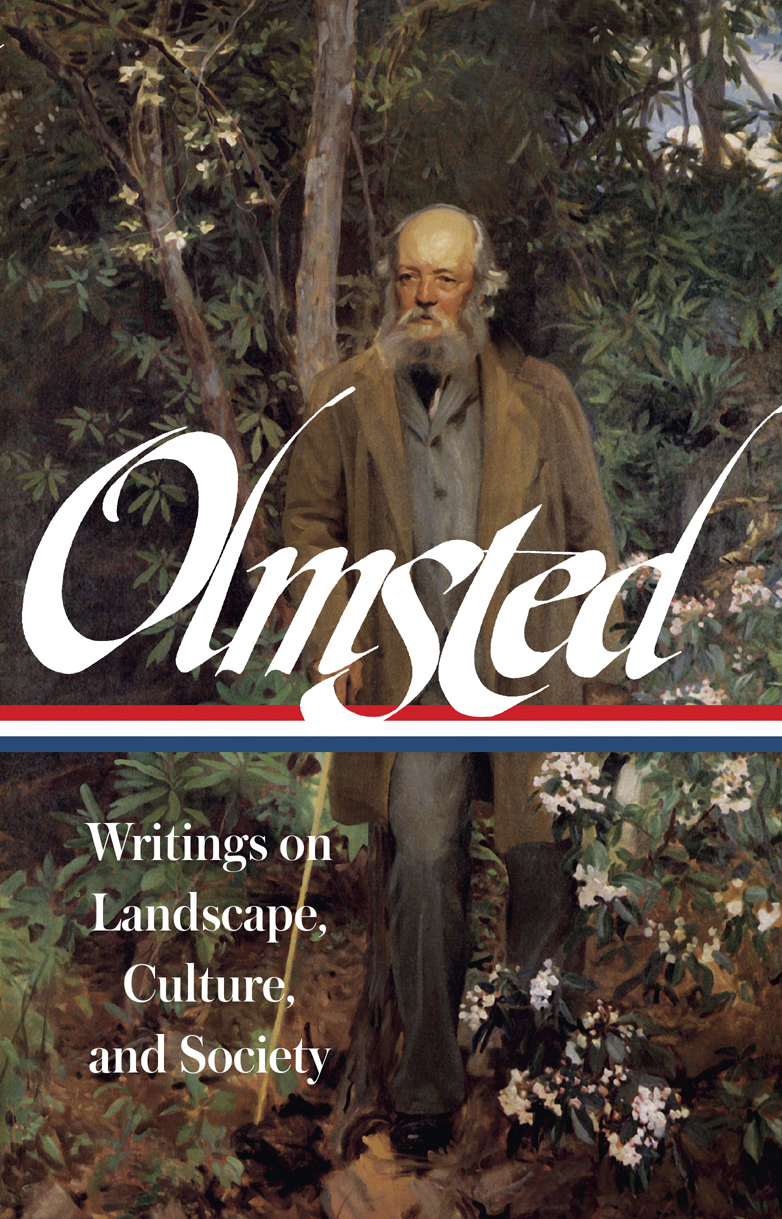Volume compilation, notes, and chronology copyright 2015 by Literary Classics of the United States, Inc., New York, N.Y. All rights reserved.
No part of this book may be reproduced in any manner whatsoever without the permission of the publisher, except in the case of brief quotations embodied in critical articles and reviews.
All works reprinted by arrangement with Johns Hopkins University Press. All rights reserved.
The illustrations in this volume were underwritten by grants
from the Gould Family Foundation
and
Furthermore: a program of the J. M. Kaplan Fund.

THE LIBRARY OF AMERICA, a nonprofit publisher, is dedicated to publishing, and keeping in print, authoritative editions of Americas best and most significant writing. Each year the Library adds new volumes to its collection of essential works by Americas foremost novelists, poets, essayists, journalists, and statesmen.
Visit our website at www.loa.org to find out more about The Library of America, and to sign up to receive our occasional newsletter with exclusive interviews with Library of America authors and editors, and our popular Story of the Week e-mails.
eISBN 978-1-59853-460-3
Print ISBN 978-1-59853-452-8
Frederick Law Olmsted:
Writings on Landscape, Culture, and Society
is kept in print by a gift in honor of the
CENTRAL PARK CONSERVANCY
in recognition of the Conservancys role
in the resurgence of Central Park
and the enhancement of Olmsteds legacy
from
Elizabeth W. Smith
to the Guardians of American Letters Fund,
established by The Library of America
to ensure that every volume in the series
will be permanently available.
Frederick Law Olmsted:
Writings on Landscape, Culture, and Society
is published with support from
THE ARTHUR F. AND ALICE E. ADAMS
CHARITABLE FOUNDATION
FURTHERMORE:
A PROGRAM OF THE J. M. KAPLAN FUND
THE GOULD FAMILY FOUNDATION
THE LEON LEVY FOUNDATION
Contents
Illustrations
TO MAKE LANDSCAPE ARCHITECTURE
MY CALLING: 18221852
and two of my fathers great uncles I remember in part by direct memory, for they lived, one at least, till I was nearly ten. But as a baby I was danced on the knee of each of them, and how much of what is in my mind about them I have by memory and how much by personal tradition I cannot be sure.
They had been seafaring men and in the revolutionary war martial men, both ashore and afloat, and captured on a privateer died in the prison ship in the Wallabout. My grandfather himself regarded one of his living brothers as a hero and told me something of an action in which the British sloop of War Ostrich of 16 guns, Captain Peter Rainier had been compelled to lower her colors to a French letter of Marque of which my uncle (Captain Gid. he was called) though but a guest on board and serving in the action as a volunteer, was at the moment in command, the French master and every commissioned officer having been killed or sent below disablingly wounded.
Of his own adventures I do not seem to have ever been able to get any account from my grandfather and the impression he left with me was that though he had been to the most distant parts of the world his life had been quiet and devoid of interest.
Once I had heard an account read from a book of the winters march through the wilds of Maine of the expedition sent to capture Quebec and I was told that my grandfather had been in it. I wanted to hear more particulars of the matter from him and plied him with questions more than I often dared. I remember only that when I asked if, when they were in a starving condition, he cut the leather off the tops of his boots and fried it, he laughed heartily and called my grandmother to tell her of it.
There was a single exception to his inability, for I do not think it was indisposition, to tell of what he had done and seen. One day I was lying with my head between the roots of a lofty elm, looking up at its swaying boughs and leafage, when he came out of the house and hobbled toward me. It must have been a Sunday or holiday, for he was dressed in his best. His best, although he was in straitened circumstances, was finer than anything we see now. Ruffles on his bosom and wrists; small clothes, stockings and silver buckled shoes; a long silver headed Malacca cane as a walking stick in his hands (I have it now), his gray hair in a queue with a bow of broad black ribband at the end. There was an old cocked hat in the garret with a quadrant, charts, bunting, and small matters of cabin furniture, but I never saw it in his hand. He wore a hat of the then common fashion of real beaver fur.
I rose as he approached and he asked, looking up, did I not think it a fine tree? Then he told me that he himself had planted this tree when a boy. Others near by he had helped to plant, but this one was all his own, and he described to me how he had dug it in the swamp and had brought it on his shoulder and been allowed to plant it all by himself. It came to me after a time as he went on talking about it that there had been nothing in all his long life of which he was so frankly proud and in which he took such complete pleasure as the planting and the beautiful growth of this tree.
Shortly after this I heard a tree spoken of as a Honey-locust, and I got a pod from it and tried to eat the bitter meat I found in it, in order that I might better realize what hard fare that was that poor John the Baptist had to live upon in the wilderness. The seeds, which I could eat no more than the pods, I planted in my garden and a year afterwards I imagined that a sprig of leaves that I found among the weeds then growing had sprung from this seed and I set a stake by it and watched it and it really turned out to be a little honey locust tree and I was proud to show it and call it mine. When I was twelve years old I dug it up and replanted it in another place, a very suitable place in respect of soil and it flourished. Forty years afterwards I went to look at it and thought it the finest honey locust I ever saw. Lately I went again and it had been felled. After a moments thought I was glad of it, for its individual beauty was out of key with the surrounding circumstances and its time had fully come.
I can see that my pleasure began to be affected by conditions of scenery at an early age; long before it could have been suspected by others from any thing that I said and before I began to mentally connect the cause and effect of enjoyment in it. It occurred too, while I was but a half grown lad that my parents thought well to let me wander as few parents are willing their children should.
Within thirty miles of where they lived there were a score of houses of their kindred and friends at which I was always welcome. They were mostly farm houses and had near them interesting rivers, brooks, meadows, rocks, woods or mountains. Those less rural had pleasant old gardens. Of the people, two only shall be referred to particularly. One who, after a deep affliction, lived in seclusion with no occupation but that of reading good old books to which he had formed an attachment in happier days. One of his favorite authors was Virgil, and he took pleasure in reading and translating him to me. He was quaintly mild, courteous, and ceremonious, of musing and contemplative habits, and in this and other respects so different from most men whom I knew that as he commanded my respect and affectionate regard, I recognize him to have had a notable influence in my education.


